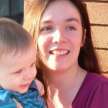Home birth safety - Part 2
What does the evidence tell us?

Yesterday I posted about the safety of home birth. Today, I'm going to touch on the statistics surrounding this topic. This is not exhaustive by any stretch, just a smattering of studies that have examined this topic over the last few decades. I will revisit and update with more at some point.
First, the disclaimer: this is not medical advice. Dear reader, I don't even know who you are, let alone your circumstances, your medical history, or your suitability for home birth. Even if I did, it's outside my scope to diagnose you or your baby, or give you medical advice. This is information only, and a recommendation to consider home birth in the context of your own personal circumstances. Give the idea a fair shake is all I'm saying. Discuss it with your midwife or doctor.
Second, I know I need to preface this by saying that yes, sometimes hospitals are necessary. This isn't my first rodeo. People tell me this as if I am not already keenly aware of it - you should know that without the assistance of hospital staff, I would be dead twice over! If you are tempted to tell me that hospitals sometimes save the lives of women and babies, trust me, I know. I am one of them.
BUT! This does not negate the fact that home birth can be a safe and reasonable option for a great many women, and I urge all mothers to consider it.
A side note - I genuinely believe that this alone - just considering staying at home throughout labour - can help parents to identify what their anxieties are about the process, and have these addressed. The facts are generally reassuring, and then they can give birth with increased confidence - wherever they ultimately choose to do that. This is what has nudged me to write about this.
I also want to mention that research and evidence should inform our choices. They do not dictate them. Science can show that Option X is, generally speaking, best for birthing women and their babies. But one size does not fit all, and there will be exceptions. Each woman is in charge of her own body, and she gets the final say.
We cannot discount empirical evidence and good old fashioned common sense. It is symptomatic of the world we live in that we even need Science to tell us what is painfully obvious in all other mammals: that birth tends to unfold most safely and smoothly when the animal is undisturbed in her own "nest". My absolute favourite piece about birth is this one: Safer Birth in a Barn. Take a minute to consider how different maternity care might look if each women were treated as if she and her baby were both worth millions of pounds.
“Don’t let the mare see you; crouch here in the hallway where you can peek over the half wall of the foaling box—the stress of seeing strangers at this time could put the foal in danger!”
Consider that we didn't need any evidence to shift away from the physiological norm, yet many require it to shift back. How strange.
One more note before we dig in: there is a world of difference between planned and unplanned home birth. Planning it is generally much safer. Having a safety net in case things are not unfolding smoothly is essential (ie. a good system of transfer). Keep in mind, when I discuss home birth, I'm referring to women who have made the informed decision to do it, are attended by at least one competent midwife, and have the option of transferring to hospital should that become necessary. Take a close look at any research that suggests hospital is a safer place to give birth and you are very likely to see this kind of flaw - like planned and unplanned being lumped together. I don't know whether this is a deliberate and sneaky attempt to skew the results, or whether it's because there are relatively few home births to use for the purposes of comparison.
National Birthday Trust study on home birth (unfortunately I can't link to it, but it is available to buy in print) showed back in the 90's that planned birth at home is a safe option and that midwives manage home births well.
The Birthplace study - Nov 2011
My summary, such as it is:
- The chance of adverse outcomes was "low in all settings" (ie. home, freestanding birth centre, midwife led unit in a hospital, or obstetric unit)
- For women who have given birth before, there were no statistically significant differences in outcomes when comparing these four settings
- Caesarean and forceps/ventouse births occurred less often at home, birth centre and MLU compared to obstetric units
- Babies born at home or in a freestanding birth centre were more likely to be breastfed at least once
- Serious tearing occurred less often at home and in freestanding birth centres
- Severe bleeding (requiring transfusion) occurred less often at home and in freestanding birth centres
- Transfer to an obstetric unit during labour or just after occurred up to 45% of the time for first time mothers, and up to 13% of the time for women who had given birth before (Note from me: this is often due to fatigue in first timers, and not due to an emergency.)
- Women were more likely to have a "normal" birth at home or in a birth centre than in an obstetric unit
- Modest increase in risk for first time mums planning to birth at home
A Cochrane review looking into hospital vs home birth for low risk women only identified one randomised controlled trial. It was very small - only 11 women. It showed no difference in safety or other outcomes.
for selected, low‐risk pregnant women, the evidence from randomised trials to support that planned hospital birth reduces maternal or perinatal mortality, morbidity, or any other critical outcome is uncertain.
It wasn't possible to draw conclusions from such a small number, in terms of "which setting is better?" but I think this is interesting anyway. It underlines to me that there has never been any strong evidence that hospital is safer. This is typical and follows a distinct pattern in maternity care. Normally, evidence is needed before we shift from the healthy physiological norm. At least, so you would assume. Instead, what we often see is an assumption that a technological advancement must be beneficial. (Continuous monitoring is a fine example - after all, if some monitoring is good, then more must be better!) This becomes the norm without the evidence to support it. And then evidence is required to reverse the shift.
Anyway - I digress! I will return to that topic another day, but for now, back to the meat:
- Lower chance of a normal birth in an obstetric unit compared to at home, plus higher chance of severe perineal trauma and haemorrhage
- No statistically significant differences in infant mortality
Authors noted:
"Lower odds of maternal morbidity and obstetric intervention support the expansion of birth centre and home birth options for women with low-risk pregnancies."
Here come the snippets:
- This looked at 14 studies including data from around 500,000 intended home births
- The upshot is: “The risk of perinatal or neonatal mortality was not different when birth was intended at home or in hospital"
My summary:
This looked at 16 studies, including data from ~500,000 intended home births. It showed:
- No reported maternal deaths.
- Those intending to birth at home experienced fewer birth interventions and untoward maternal outcomes.
- For example, less likely to experience caesarean section; operative vaginal birth, epidural analgesia, episiotomy, serious tearing, oxytocin augmentation, infection.
- Haemorrhage either less likely or no different to hospital birth
To sum up:
Yes, there is risk when we give birth. This is true no matter where we are. It is true for every aspect of our lives. There is a risk when we have sex, for example. We take a risk when we drive to the shops, or cross the street. Giving birth is a personal event, and women have to choose which risks they feel most comfortable taking, and what circumstances afford them the greatest feeling of safety to allow the process the best chance to unfold smoothly.
The evidence shows
Staying at home is a reasonable choice for lots of mums. The care given at home generally ensures their safety. That includes timely transfer if the situation changes. Women planning to give birth at home are more likely to:
- experience a normal birth,
- be happy with their birth (this has implications for their ongoing mental well-being)
and they are less likely to experience:
- serious tearing
- heavy bleeding
- caesarean
- epidural
- forceps, or ventouse
- augmentation (aka The Drip to speed things up)
My opinion:
Home birth should be offered to all women experiencing a straightforward pregnancy, and expecting to give birth to a healthy baby. It should be recommended if she has also given birth before, especially if it was a reasonably straightforward birth. Her choice should be respected, and if that choice is based on concerns (what if XYZ happens?) those concerns should be discussed. It is just unethical not to, regardless of where she actually chooses to have her baby. We need to stop frightening women, and start building trust that our female bodies generally work pretty well. This is an excellent starting point for safe, satisfying, and respectful maternity care.
It's easy to scare women. It's even profitable to scare women... But it's not nice, so let's stop it. ~Ina May Gaskin
About the Creator
Sam The Doula (Blooming Miracle)
Childbirth Eductator since 2011
Building a resource for mothers-to-be to feel informed and confident about their choices
You can find me on Facebook or book classes with me






Comments
There are no comments for this story
Be the first to respond and start the conversation.